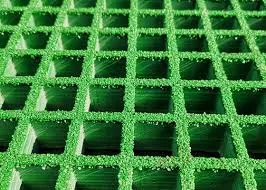
-
 Afrikaans
Afrikaans -
 Albanian
Albanian -
 Amharic
Amharic -
 Arabic
Arabic -
 Armenian
Armenian -
 Azerbaijani
Azerbaijani -
 Basque
Basque -
 Belarusian
Belarusian -
 Bengali
Bengali -
 Bosnian
Bosnian -
 Bulgarian
Bulgarian -
 Catalan
Catalan -
 Cebuano
Cebuano -
 China
China -
 China (Taiwan)
China (Taiwan) -
 Corsican
Corsican -
 Croatian
Croatian -
 Czech
Czech -
 Danish
Danish -
 Dutch
Dutch -
 English
English -
 Esperanto
Esperanto -
 Estonian
Estonian -
 Finnish
Finnish -
 French
French -
 Frisian
Frisian -
 Galician
Galician -
 Georgian
Georgian -
 German
German -
 Greek
Greek -
 Gujarati
Gujarati -
 Haitian Creole
Haitian Creole -
 hausa
hausa -
 hawaiian
hawaiian -
 Hebrew
Hebrew -
 Hindi
Hindi -
 Miao
Miao -
 Hungarian
Hungarian -
 Icelandic
Icelandic -
 igbo
igbo -
 Indonesian
Indonesian -
 irish
irish -
 Italian
Italian -
 Japanese
Japanese -
 Javanese
Javanese -
 Kannada
Kannada -
 kazakh
kazakh -
 Khmer
Khmer -
 Rwandese
Rwandese -
 Korean
Korean -
 Kurdish
Kurdish -
 Kyrgyz
Kyrgyz -
 Lao
Lao -
 Latin
Latin -
 Latvian
Latvian -
 Lithuanian
Lithuanian -
 Luxembourgish
Luxembourgish -
 Macedonian
Macedonian -
 Malgashi
Malgashi -
 Malay
Malay -
 Malayalam
Malayalam -
 Maltese
Maltese -
 Maori
Maori -
 Marathi
Marathi -
 Mongolian
Mongolian -
 Myanmar
Myanmar -
 Nepali
Nepali -
 Norwegian
Norwegian -
 Norwegian
Norwegian -
 Occitan
Occitan -
 Pashto
Pashto -
 Persian
Persian -
 Polish
Polish -
 Portuguese
Portuguese -
 Punjabi
Punjabi -
 Romanian
Romanian -
 Russian
Russian -
 Samoan
Samoan -
 Scottish Gaelic
Scottish Gaelic -
 Serbian
Serbian -
 Sesotho
Sesotho -
 Shona
Shona -
 Sindhi
Sindhi -
 Sinhala
Sinhala -
 Slovak
Slovak -
 Slovenian
Slovenian -
 Somali
Somali -
 Spanish
Spanish -
 Sundanese
Sundanese -
 Swahili
Swahili -
 Swedish
Swedish -
 Tagalog
Tagalog -
 Tajik
Tajik -
 Tamil
Tamil -
 Tatar
Tatar -
 Telugu
Telugu -
 Thai
Thai -
 Turkish
Turkish -
 Turkmen
Turkmen -
 Ukrainian
Ukrainian -
 Urdu
Urdu -
 Uighur
Uighur -
 Uzbek
Uzbek -
 Vietnamese
Vietnamese -
 Welsh
Welsh -
 Bantu
Bantu -
 Yiddish
Yiddish -
 Yoruba
Yoruba -
 Zulu
Zulu
FRP Sump Covers for Enhanced Durability and Efficiency in Drainage Systems
FRP Sump Covers An Innovative Solution for Sustainable Infrastructure
In today's rapidly evolving industrial landscape, the significance of choosing the right materials for construction and infrastructure projects cannot be overstated. One of the emerging stars in this realm is the Fiberglass Reinforced Plastic (FRP) sump cover. This innovative product combines durability, strength, and sustainability, making it an ideal choice for various applications, especially in environments that demand high-performance materials.
FRP sump covers are designed to provide a protective barrier over sumps, which are crucial for managing stormwater or wastewater in both commercial and industrial settings. Unlike traditional materials like metal or concrete, FRP offers numerous advantages that make it a superior choice for sump covers.
FRP Sump Covers An Innovative Solution for Sustainable Infrastructure
Another key benefit of FRP sump covers is their resistance to corrosion and chemical damage. In environments where harsh chemicals or saline conditions are present—such as in wastewater treatment facilities or coastal industrial sites—FRP stands out. Traditional materials like metal can corrode over time, leading to structural weaknesses and safety hazards. Conversely, FRP maintains its integrity and performance even when exposed to the most challenging conditions, ensuring longevity and reducing maintenance costs.
frp sump cover

Moreover, FRP is highly customizable. Manufacturers can produce covers in various shapes, sizes, and colors, allowing for flexibility in design and ensuring that they meet specific project requirements. This customization not only enhances functional performance but also aesthetic appeal. Thus, FRP sump covers can blend seamlessly with the surroundings, contributing to the overall visual harmony of the infrastructure.
In addition to their practical advantages, FRP sump covers are an environmentally friendly choice. The production of FRP can be more sustainable than that of traditional materials, and its long lifespan means fewer replacements over time, leading to lower environmental impact. Furthermore, many FRP products are manufactured using recycled materials and can themselves be recycled at the end of their life cycle, aligning with global sustainability goals.
With the increasing emphasis on sustainable practices and materials, industries are progressively recognizing the benefits that FRP offers. As municipalities and companies strive to adhere to environmental regulations, the adoption of FRP sump covers is likely to rise. They not only fulfill the mechanical demands required by infrastructure but do so in a manner that promotes sustainability and efficiency.
In conclusion, FRP sump covers represent a significant advancement in material technology for infrastructure projects. Their strength, durability, resistance to corrosion, light weight, and customizable nature make them a standout choice for engineers and architects alike. As we continue to prioritize sustainability in design and construction, FRP products will undoubtedly play a pivotal role in shaping the future of infrastructure. Embracing these innovative solutions is essential for building a resilient and environmentally responsible society.









